|
|
|
Книги издательства «Roundhouse»
|
From antiquity, when the gods and goddesses were commonly featured in works of art, through to the twentieth century, when Surrealists drew on archetypes from the unconscious, artists have embedded symbols in their works. As with previous volumes in the Guide to Imagery series, the goal of this book is to provide contemporary readers and museum visitors with the tools to read the hidden meanings in works of art. This latest volume is divided thematically into four sections featuring symbols related to time, man, space (earth and sky), and allegories or moral lessons. Readers will learn, for instance, that night, the primordial mother of the cosmos, was often portrayed in ancient art as a woman wrapped in a black veil, whereas day or noon was often represented in Renaissance art as a strong, virile man evoking the full manifestation of the sun's energy Each entry in the book contains a main reference image in which details of the symbol or allegory being analyzed are called out for discussion. In the margin, for quick access by the reader, is a summary of the essential characteristics of the symbol in question, the derivation of its name, and the religious tradition from which it springs. |
|
Herb Ritts: L.A. Style traces the life and career of the iconic photographer through a compelling selection of renowned, as well as previously unpublished, photographs and two insightful essays. Herb Ritts (1952-2002) was a Los Angeles-based photographer who established an international reputation for distinctive images of fashion models, nudes, and celebrity portraits. During the 1980s and 1990s, Ritts was sought out by leading fashion designers such as Armani, Gianfranco Ferre, Donna Karan, Calvin Klein, Valentino, and Versace, as well as magazine editors from GQ, Interview, Rolling Stone, and Vanity Fair, among others, to lend glamour to their products and layouts. Largely self-taught, Ritts developed his own style, one that often made use of the California light and landscape and helped to separate his work from his New York-based peers. From the late 1970s until his untimely death from AIDS in 2002, Ritts's ability to create photographs that successfully bridged the gap between art and commerce was not only a testament to the power of his imagination and technical skill, but also marked the synergistic union between art, popular culture, and business that followed in the wake of the Pop Art movement of the 1960s and 1970s. An exhibition of the same name will be on view at the Getty Center from April 3 through August 12, 2012; at the Cincinnati Art Museum from October 6 through December 30, 2012; and at the John and Mable Ringling Museum of Art in Sarasota, Florida, from February 23 through May 19, 2013. |
|
This volume examines the ways that sovereign rulers have employed well-defined symbols, attributes, and stereotypes to convey their power to their subjects and rivals, as well as to leave a legacy for subsequent generations to admire. Legendary rulers from antiquity such as Alexander the Great, Julius Caesar, and Constantine have been looked to as models for their display of imperial power by the rulers of later eras. From medieval sovereigns such as Charlemagne and France’s Louis IX to the tsars of Russia and the great European royal dynasties of the Hapsburgs, the Bourbons, and the Tudors, the rulers of each period have appropriated and often embellished the emblems of power employed by their predecessors. Even the second-tier lords who ruled parts of France and Italy during the Renaissance, such as the dukes of Burgundy, the Gonzaga of Mantua, and the Medici of Florence became adept at manipulating this imagery. The final chapter is reserved for Napoleon I, perhaps the ultimate master of symbolic display, who assumed the attributes of Roman emperors to project an image of eternal and immutable authority. The author examines not only regal paraphernalia such as crowns, scepters, thrones, and orbs, but also the painted portraits, sculptures, tapestries, carved ivories, jewelry, coins, armor, and, eventually, photographs created to display their owner’s sovereign power, a vast collection of works that now forms a significant portion of the cultural heritage of Western civilization. |
|
An artist's materials--the bold brushstrokes of a Van Gogh oil painting, the sparkling gold leaf in a Byzantine mosaic, the fragile translucence of a porcelain vase--are not just the accessories of his or her work. They are the physical embodiment of the artist's creative vision and a reflection of the historical context in which they were used. This latest volume in the popular Guide to Imagery series discusses the materials and processes used in eight media: painting, drawing, printmaking, sculpture, mosaics, ceramics, glass, and metalwork. Within each of these categories, Antonella Fuga examines the range of materials and techniques that have developed over the centuries. For instance, in the chapter on drawing, she analyzes the use of charcoal, red chalk, and pastels, among other media. Capsule descriptions in the margins list essential information about the subject under discussion, and details of the artworks employed as examples are called out. The book concludes with a brief overview of contemporary techniques. Richly illustrated with artworks from many of the world's important museums, this book provides art enthusiasts with new insights into the creation of many of the world's great masterpieces. |
|
Fourteenth-century Europe was ravaged by famine, war, and, most devastatingly, the Black Plague. These widespread crises inspired a mystical religiosity, which emphasized both ecstatic joy and extreme suffering, producing emotionally charged and often graphic depictions of the Crucifixion and the martyrdoms of the saints. While the great boom of cathedral building that had marked the previous century waned, cathedrals continued to serve as the centers of religious life and artistic creation. Wealthy patrons sponsored the production of elaborate altarpieces, as well as smaller panel paintings and religious statues for private devotional use. A growing literate elite created a demand for both richly decorated prayer books and volumes on secular topics. In Italy, the foremost Sienese painter, Duccio, sought to synthesize northern, Gothic influences with eastern, Byzantine ones, while the groundbreaking Florentine Giotto moved toward the depiction of three-dimensional figures in his wall paintings. This third volume in the Art through the Centuries series highlights the most noteworthy concepts, geographic centers, and artists of this turbulent century. Important facts about the subjects under discussion are summarized in the margins of each entry, and salient features of the illustrated artworks are identified and discussed. |
|